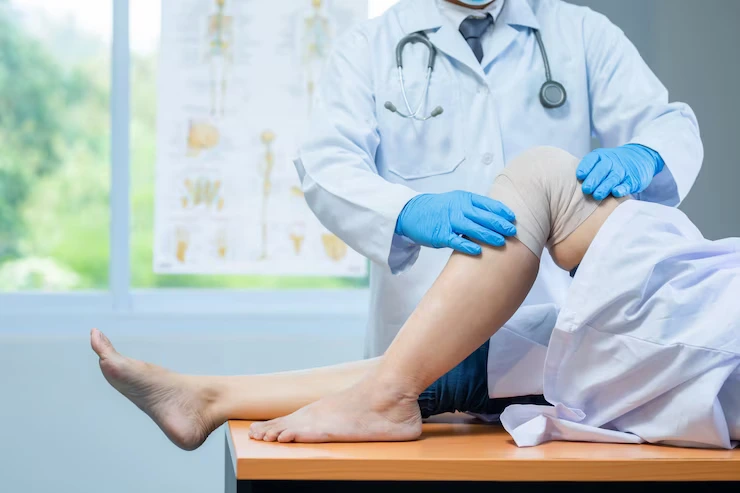


Do you feel discomfort, soreness, or aching in the knee or hip joint? The knee joint is where the thigh bone (femur) meets the shinbone (tibia) and the kneecap (patella). The hip joint is where the thigh bone connects to the pelvis
it’s important to seek medical advice if you are experiencing persistent knee or hip pain as early diagnosis and treatment can help prevent further complications.
Knee pain symptoms include
Hip pain symptoms: You will feel the pain in the
Physiotherapy can be an effective treatment for knee and hip pain. A physiotherapist will work with you to develop a customized treatment plan based on your specific condition and symptoms. Here are some common techniques used in physiotherapy to treat knee and hip pain:
Exercise therapy: Specific exercises can be prescribed to help strengthen the muscles around the hip and knee joints, improve the range of motion, and reduce pain.
Manual therapy: This involves hands-on techniques such as massage, mobilization, and manipulation to help reduce pain, improve joint mobility, and increase flexibility.
Electrotherapy: Modalities such as ultrasound, electrical stimulation, and heat or cold therapy may be used to help reduce pain, inflammation, and muscle tension.
Education: Your physiotherapist can provide you with advice on how to manage your pain, improve your posture, and avoid activities that may aggravate your symptoms.
It’s important to work with a qualified physiotherapist and follow their advice to achieve the best possible outcome.
Functional training: This involves simulating daily activities to help you learn how to move in a way that minimizes pain and reduces the risk of injury.
Assistive devices: Depending on your condition, your physiotherapist may recommend the use of assistive devices such as crutches, braces, or orthotics to help improve your mobility and reduce pain.
Information: Take charge of your knee discomfort right away to prevent it from further interfering with your life. Start today and go towards long-term pain relief! To talk with one of our passionate physiotherapists, schedule a consultation at Creekwood Physiotherapy right away.
Hip and knee pain physiotherapy is a type of physical therapy that focuses on managing pain and improving function in the hip and knee joints. It may involve exercises, manual therapy techniques, and other interventions to help reduce pain and improve mobility.
Hip and knee pain can be caused by a variety of factors, including osteoarthritis, rheumatoid arthritis, overuse injuries, strains, sprains, and fractures.
Hip and knee pain physiotherapy works by developing an individualized treatment plan that includes exercises, stretches, manual therapy techniques, and other interventions designed to reduce pain and improve function in the affected joints.
In some cases, hip and knee pain physiotherapy can help prevent the need for surgery by reducing pain and improving function in the affected joints. However, in some cases surgery may be necessary to fully address the underlying condition.
Your physiotherapist may provide you with exercises and stretches to do at home to supplement your in-person sessions. It's important to follow their instructions carefully to ensure you're doing the exercises correctly and safely.




Reclaim Your Body, Recharge Your Life.
Join the Physiotherapy Revolution!